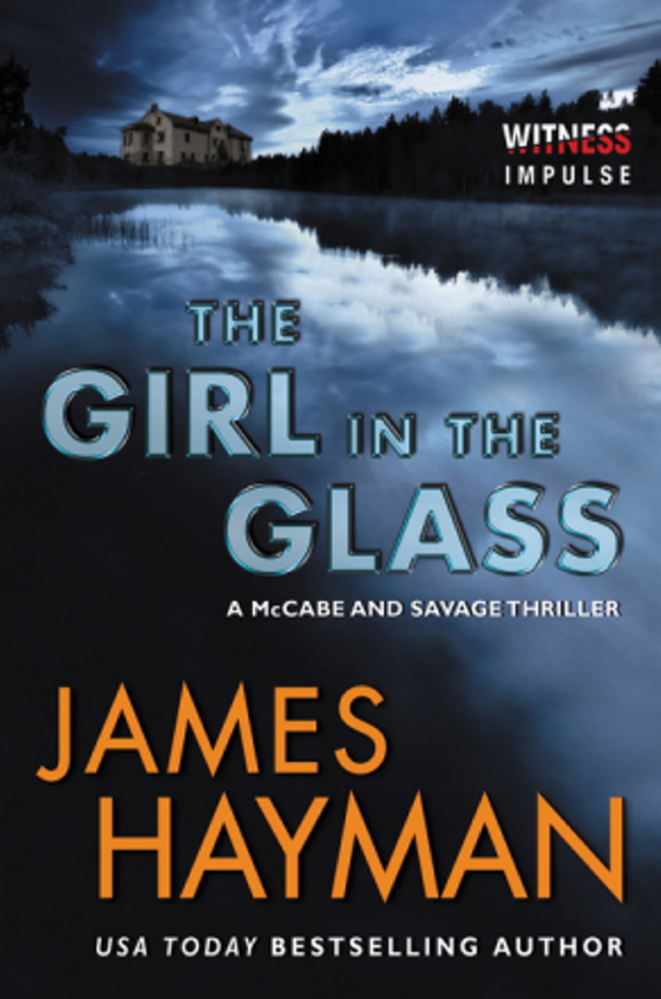It’s complicated.
That’s often the refrain you get from people about to tell you a convoluted story about their family, love life or estranged relationships. The same can be said of James Hayman’s new mystery, “The Girl in the Glass,” fourth in his thriller series featuring Detective Sergeant Mike McCabe and his partner, Sergeant Maggie Savage, of the Portland Police Department. In addition to family, love lives and estrangement, Hayman adds wives, ex-wives, girlfriends, lovers and sisters.
At the heart of the story is a murder. Actually, two suspected murders. One is that of Veronica Aimee Whitby, known by all as Aimee – a beautiful, smart, 18-year-old who just graduated top of her class from Penfield Academy, a tony Portland private school. The other is the mysterious death of her great-great-grandmother, for whom she was named, that occurred 108 years prior. Both were last seen alive on Whitby Island, a beacon to the stature of one of the richest, old-money families of Portland. Both victims are found nude. Both have the letter “A” carved on their chests.
It’s complicated, and the story is only getting started.
At the graduation party hosted by Aimee’s father Edward on Whitby Island, Aimee-the-younger manages to upstage her dad during the unveiling of a portrait of the original Aimee painted by a famous artist in 1904. Her father recently paid a fortune to bring the painting back into the family. Unbeknownst to anyone, the young Aimee has commissioned a red gown that mirrors the one in the portrait. She has done up her hair, applied makeup and wears the same emerald earrings that her great-great-grandmother wore for the portrait. As the drape falls away from the canvas, Aimee-the-younger dramatically descends the estate’s staircase, drawing enthusiastic applause from the large gathering and gushing adoration from her father.
Several hours later, the young woman is found naked and dead in a thicket off the Eastern Prom in Portland. It’s also only a couple of hours after she made love with her former high school AP English teacher with whom she’s had a long-running romance that had ended abruptly with a bitter quarrel.
Maggie Savage calls McCabe from the crime scene at 2 a.m. He arrives to inspect “Jane Doe” only to realize that she is the daughter of a crime reporter for the Portland Press Herald – Edward Whitby’s ex-wife and a woman McCabe used to date.
Beyond trying to reason through who might have killed Aimee, McCabe and Savage speculate over the meaning of the “A.” Possibly for the “A” of Nathanial Hawthorne’s “The Scarlett Letter?” Or indicating the first of what might become the handiwork of a serial killer? Or maybe the first letter of the victim’s name, or the killer’s name?
To this rich mix, Hayman introduces a journal that was written by Aimee-the-elder’s husband on his deathbed in 1924 to assuage the guilt he long carried over his wife’s death. The twin Aimee tragedies begin to unfold in parallel, teasing the reader to figure out where lies the connection. Hayman is masterful in planting red herrings in both storylines, so plentifully in the great-great-granddaughter’s story that one almost needs a social map to keep apace of all the potential suspects. Aimee, ever over-confident and self-absorbed, had her enemies.
The author had me guessing to the end. His plot crafting made me think of Martin Cruz Smith and Scott Turow at their best. Hayman is also skilled at developing rich, fully textured characters, especially McCabe, who is flawed and endearing at once.
For anyone familiar with greater Portland, Hayman moves his story through many well-known neighborhoods and local hangouts. It is one of the hallmarks of his series. Though readers may experience a sense of the familiar in the landscape, Hayman never lets you feel you know where you are within the dueling mysteries.
He keeps everything very complicated.
Frank O Smith is a Maine writer and ghostwriter whose novel, “Dream Singer,” was named a Notable Book of the Year in Literary Fiction in 2014 by “Shelf Unbound,” and was also a finalist for the Bellwether Prize, created by Barbara Kingsolver. Smith can be reached via his website:
frankosmithstories.com
Send questions/comments to the editors.



Comments are no longer available on this story